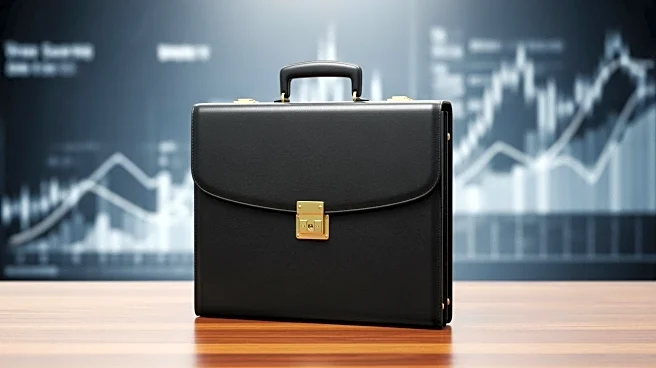What's Happening?
The U.S. Treasury Department recently conducted a Dutch auction for 3-month Treasury bills, resulting in a high rate of 3.810%. The auction, which took place on October 20, 2025, saw a total of $86 billion accepted from public bids, with competitive bids amounting
to approximately $83.93 billion and noncompetitive bids at $1.82 billion. The auction also included Federal Reserve add-ons totaling $2.98 billion. The Dutch auction method, also known as a uniform-price auction, allows successful bidders to pay the lowest accepted bid price rather than their actual bid price. The issued bills have a maturity date of January 22, 2026, and a CUSIP number of 912797PD3.
Why It's Important?
The auction's high rate of 3.810% reflects the current economic conditions and investor sentiment towards short-term government securities. This rate is significant as it indicates the cost at which the government can borrow money for short-term needs. The high demand, as evidenced by the bid-to-cover ratio of 3.01, suggests strong investor interest in these securities, which are considered low-risk investments. The results of this auction can impact the broader financial markets, influencing interest rates and the cost of borrowing for businesses and consumers. Additionally, the auction's outcome may provide insights into the market's expectations for future economic conditions and monetary policy.
What's Next?
The Treasury Department will continue to monitor market conditions and investor demand as it plans future auctions. The results of this auction may influence the department's strategy in setting rates for upcoming securities. Investors and financial analysts will likely keep a close watch on subsequent auctions to gauge any shifts in market sentiment or economic outlook. Additionally, the Federal Reserve's monetary policy decisions could impact future auction rates and investor demand for Treasury securities.














